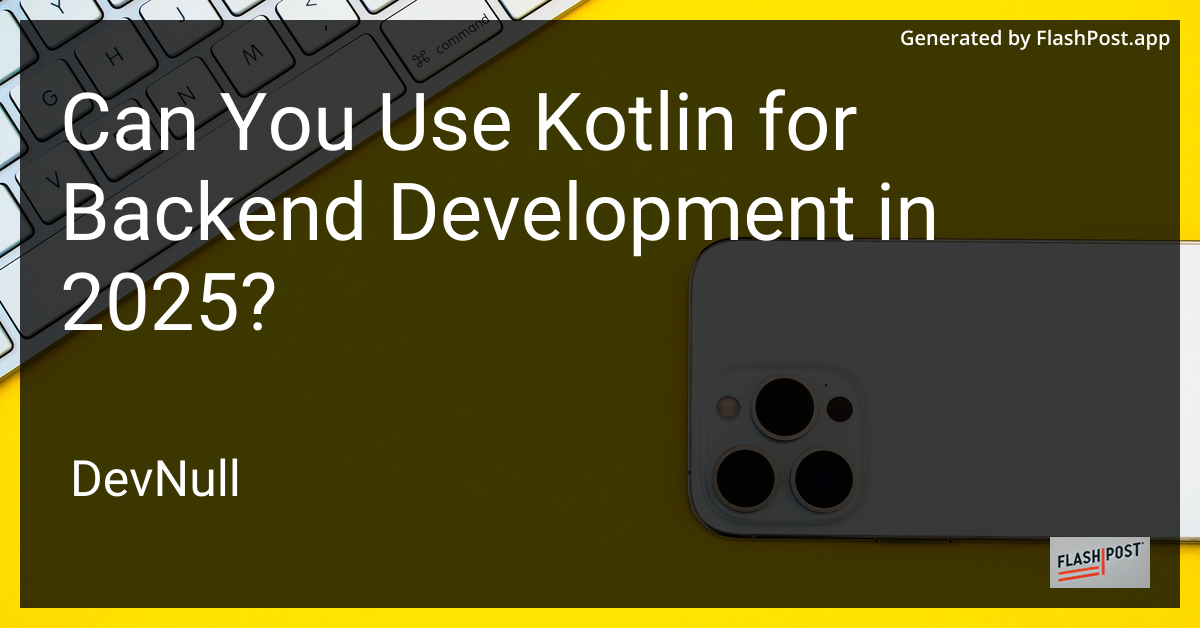

Can You Use Kotlin for Backend Development in 2025?
Kotlin, a programming language developed by JetBrains, has rapidly gained popularity in the development community. Known for its concise syntax and seamless interoperability with Java, Kotlin has traditionally been associated with Android app development. However, its capabilities extend far beyond mobile applications. In 2025, Kotlin continues to be a viable and robust choice for backend development. Let’s explore why Kotlin is an excellent option for developing backend systems and learn how it can enhance your tech stack.
Why Choose Kotlin for Backend Development?
1. Interoperability with Java
Kotlin is 100% interoperable with Java, meaning you can use any existing Java library or framework without any modification. This is crucial for backend development where leveraging robust Java-based frameworks like Spring is important. Kotlin simply compiles to Java bytecode, allowing you to introduce it into a Java-based backend without disrupting your existing infrastructure.
2. Coroutines for Asynchronous Programming
Backend applications often require concurrency to handle numerous requests efficiently. Kotlin’s coroutines provide a lightweight, simple syntax for asynchronous programming, avoiding the callback hell that characterizes many asynchronous solutions. Coroutines can significantly improve the performance of your backend systems by enabling you to handle multiple network and IO operations concurrently.
3. Tooling and Support
JetBrains provides excellent IDE support for Kotlin. IntelliJ IDEA, in particular, offers advanced refactoring tools, code completion, and error-checking features, which make Kotlin development both productive and enjoyable. The thriving Kotlin community and abundant online resources ensure that you have the necessary support for solving any development challenges that arise.
Exploring Kotlin Features for Backends
Room Database Integration
When developing Kotlin backends that interact with databases, Room provides a seamless solution for working with SQLite databases. Though initially designed for Android, its capabilities can be exploited in backend scenarios for data persistence. Learn more about how Kotlin works with Room by turning a Room entity into a data class in this detailed guide.
Data Handling and JSON Parsing
String manipulation and JSON handling are critical tasks in backend development. Kotlin’s standard library provides straightforward methods to handle strings and convert them into well-structured JSON objects. If you need to understand more, consider reading this guide on converting Strings to JSON in Kotlin. Additionally, mapping each column of a JSON array can be efficiently handled with Kotlin, which is highlighted in this handy article.
Conclusion
Kotlin is a powerful language for backend development because of its interoperability with Java, concise syntax, and advanced features like coroutines. As we look toward 2025, the language continues to be favored by developers creating robust, efficient, and scalable backend systems. Its growing ecosystem and seamless integration capabilities with existing technologies ensure that Kotlin remains a compelling choice for backend development. Whether you’re building new applications from scratch or integrating into existing architecture, Kotlin provides the tools and features necessary to meet modern backend demands.
This markdown article provides a comprehensive overview of using Kotlin for backend development in 2025, and it includes embedded links to resources that offer deeper insights into Kotlin's capabilities with specific features like room database, JSON parsing, and string handling.